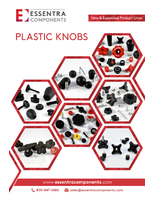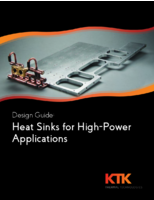ANSI-Supported Standards aid interactive museum exhibits.
Press Release Summary:
ANSI supports various members and accredited standards developers responsible for standards supporting 21st-century museums. Examples include Illuminating Engineering Society of North America's (IESNA) IESNA TM-16-05, Technical Memorandum on Light Emitting Diode (LED) Sources and Systems; International Electrotechnical Commission's (IEC) series of standards related to sound system equipment; as well as ANSI/IESNA RP-30-96, Museum and Art Gallery Lighting.
Original Press Release:
Standards Help Modernize Interactive Museum Exhibits
Interactive exhibits are part of the modern museum experience, as digital and mobile technologies enhance artistry and boost visitor participation. Reflective of a cultural shift to interactive touch screens, 3D, and new ways of storytelling through digital, museum exhibits represent innovation more than ever. The American National Standards Institute (ANSI) proudly supports a number of members and accredited standards developers responsible for the standards that support 21st-century museums.
Special effects are often front and center at interactive museum exhibitions, ranging from kinesthetic exhibits that allow guests to create their own art to holographic displays.
ANSI member and accredited standards developer the Illuminating Engineering Society of North America (IESNA) created IESNA TM-16-05, Technical Memorandum on Light Emitting Diode (LED) Sources and Systems, which describes LED sources and systems and answers the most common questions that the lighting industry receives from the curious public. The authors, all members of the IESNA Light Sources Committee, represent a wide cross section of lighting disciplines – from LED-source, lamp, and luminaire manufacturers to lighting-controls producers.
Sound is a key component of many interactive museum experiences. The International Electrotechnical Commission (IEC) has developed a series of standards related to sound system equipment, includingIEC 60268-11, Sound System Equipment, Part 11: Application of connectors for the interconnection of sound system components, which guides the contact arrangement and contact designation for circular and concentric connectors for sound system components. These standards were developed by IEC Technical Committee (TC) 100, Audio, video, and multimedia equipment. The chairperson of the committee is the U.S.’s David Carlton Felland of the Society of Motion Picture and Television Engineers (SMPTE), an ANSI member and accredited standards developer. The Consumer Technology Association (CTA) serves as the U.S. National Committee (USNC)-approved U.S. TAG Administrator to IEC TC 100.
Another international standard, ISO/IEC TS 20071-21:2015, Information technology - User interface component accessibility - Part 21: Guidance on audio descriptions, provides recommendations for describing audiovisual content in an auditory modality for use in recorded videos, broadcast television, museum and art gallery exhibits, and other live or recorded presentations, regardless of the language and technology being used to transmit and present the content. This technical specification was developed by the International Organization for Standardization (ISO) and IEC Joint Technical Committee (JTC) 1, Information Technology, Subcommittee (SC) 35 on User interface, with France (AFNOR) serving as the SC 35 Secretariat. The U.S. leads ISO/IEC JTC 1, with ANSI holding the Secretariat and Karen Higginbottom, director of standards initiatives at Hewlett-Packard, serving as the group’s chair. The InterNational Committee for Information Technology Standards (INCITS) serves as the ANSI-accredited U.S. Technical Advisory Group (TAG) administrator to JTC 1.
Of course, museums are also supported by traditional lighting standards, such as ANSI/IESNA RP-30-96, Museum and Art Gallery Lighting. This recommended practice provides specific standards for satisfying the special requirements of museums and art galleries from many perspectives, including successful museum lighting, design guidelines, damage to museum exhibits, architectural aspects and daylight, electric light sources, luminaires and accessories, light controls, control of glare, measurements and measuring instruments, lighting calculations, and maintenance and budgets. It provides extensive glossary defines both lighting and architectural terminology.




